Related Research Articles

An ocean liner is a passenger ship primarily used as a form of transportation across seas or oceans. Liners may also carry cargo or mail, and may sometimes be used for other purposes.

A passenger ship is a merchant ship whose primary function is to carry passengers on the sea. The category does not include cargo vessels which have accommodations for limited numbers of passengers, such as the ubiquitous twelve-passenger freighters once common on the seas in which the transport of passengers is secondary to the carriage of freight. The type does however include many classes of ships designed to transport substantial numbers of passengers as well as freight. Indeed, until recently virtually all ocean liners were able to transport mail, package freight and express, and other cargo in addition to passenger luggage, and were equipped with cargo holds and derricks, kingposts, or other cargo-handling gear for that purpose. Only in more recent ocean liners and in virtually all cruise ships has this cargo capacity been eliminated.
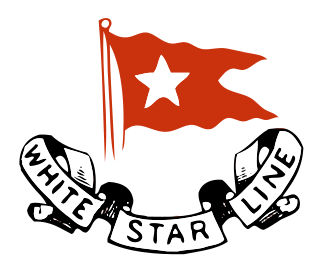
The Oceanic Steam Navigation Company, more commonly known as the White Star Line (WSL), was a British shipping company. Founded out of the remains of a defunct packet company, it gradually rose up as one of the most prominent shipping lines in the world, providing passenger and cargo services between the British Empire and the United States. While many other shipping lines focused primarily on speed, White Star branded their services by focusing more on providing steady and comfortable passages, for both upper class travellers and immigrants. Today, it is most famous for the innovative vessel Oceanic of 1870, and for the losses of some of their best passenger liners, including the wrecking of RMS Atlantic at Halifax in 1873, the sinking of RMS Republic off Nantucket in 1909, the loss of RMS Titanic in 1912 and HMHS Britannic in 1916 while serving as a hospital ship. Despite its casualties, the company retained a prominent hold on shipping markets around the globe before falling into decline during the Great Depression, which ultimately led to a merger with its chief rival, Cunard Line, which operated as Cunard-White Star Line until 1950. Cunard Line then operated as a separate entity until 2005 and is now part of Carnival Corporation & plc. As a lasting reminder of the White Star Line, modern Cunard ships use the term White Star Service to describe the level of customer care expected of the company.

The Flying P-Liners were the sailing ships of the German shipping company F. Laeisz of Hamburg.
The Wigham Richardson shipbuilding company was named after its founder, John Wigham Richardson (1837-1908), the son of Edward Richardson, a tanner from Newcastle upon Tyne, and Jane Wigham from Edinburgh.
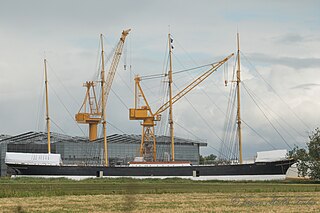
Peking is a steel-hulled four-masted barque. A so-called Flying P-Liner of the German company F. Laeisz, it was one of the last generation of cargo-carrying iron-hulled sailing ships used in the nitrate trade and wheat trade around Cape Horn.

Moshulu is a four-masted steel barque, built as Kurt by William Hamilton and Company at Port Glasgow in Scotland in 1904. The largest remaining original windjammer, she is currently a floating restaurant docked in Penn's Landing, Philadelphia, adjacent to the museum ships USS Olympia and USS Becuna.
SS America may refer to:
American Export-Isbrandtsen Lines, New York, was the leading US-flag shipping company between the U.S. east coast and the Mediterranean from 1919 to 1977, offering both cargo ship services and passenger ship services, until it declared bankruptcy and was acquired by Farrell Lines, New York.

SS Kronprinz Wilhelm was a German passenger liner built for the Norddeutscher Lloyd, a former shipping company now part of Hapag-Lloyd, by the AG Vulcan shipyard in Stettin, Germany, in 1901. She took her name from Crown Prince Wilhelm, son of the German Emperor Wilhelm II, and was a sister ship of SS Kaiser Wilhelm der Grosse.

SS Britannic was an ocean liner of the White Star Line. It was the first of three ships of the White Star Line to sail with Britannic name.
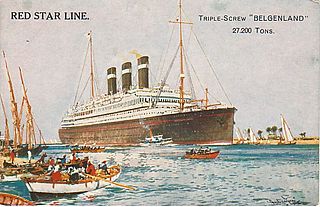
The Belgenland was built in 1914 and originally served as a freighter and World War I troopship for the White Star Line under the name SS Belgic. Because she was needed for the war effort, she was hastily finished with only two smokestacks and a superstructure only one deck high. Initially used for carrying cargo, in 1918 she was given accommodations for up to 3,000 troops. Her gross tonnage was listed at 24,547. The doomed liner Justicia was a near identical sister ship, both being built at the same yard.

Abyssinia (1870) was a British mail liner originally operated by the Cunard Line on the Liverpool–New York route. She later served the Guion Line on the same route and the Canadian Pacific Line in the Pacific. In December 1891, Abyssinia was destroyed mid-Atlantic without loss of life by a fire that started in her cargo of cotton, further highlighting the danger in carrying both cotton and passengers on the same ship.

MS Skaubryn was a Norwegian passenger ship launched in 1950, which sailed between Europe and Australia. She sank in the Indian Ocean in April 1958, after a fire.
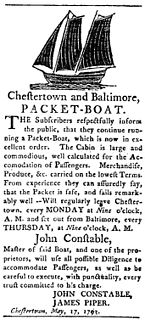
Packet boats were medium-sized boats designed for domestic mail, passenger, and freight transportation in European countries and in North American rivers and canals, some of them steam driven. They were used extensively during the 18th and 19th centuries and featured regularly scheduled service.

A cargo liner, also known as a passenger-cargo ship or passenger-cargoman, is a type of merchant ship which carries general cargo and often passengers. They became common just after the middle of the 19th century, and eventually gave way to container ships and other more specialized carriers in the latter half of the 20th century.
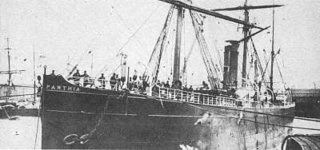
The SS Parthia (1870–1956) was an iron-hulled transatlantic ocean liner built for the Cunard Line by William Denny and Brothers in Dumbarton, Scotland. Her sister ships were the Abyssinia and Algeria. Unlike her two sisters, Parthia was smaller, built in a different shipyard and had a slightly different funnel arrangement. The Parthia was retired by Cunard in 1883 and sold to John Elder & Co., who subsequently transferred her to the Guion Line. After serving with the Guion Line and operating on transpacific routes with the Canadian Pacific Railway Company, she was refit and renamed Victoria.

RMS Parthia was the second of two all first class transatlantic passenger cargo liners built for the Cunard Line. She later served on the London to Auckland route for the New Zealand Shipping Company under the name Remuera, and still later as a Pacific cruise ship under the name Aramac. She was scrapped in 1969–70.

The Glenavon was a British iron cargo ship of the Glen Line that was wrecked off the coast of China in 1898. Four people, but not the master, lost their lives in the wreck. The master had his licence suspended for one year.
References
- ↑ "City of York (1119100)" . Miramar Ship Index . Retrieved 30 July 2020.
| This article includes a list of ships with the same or similar names. If an internal link for a specific ship led you here, you may wish to change the link to point directly to the intended ship article, if one exists. |